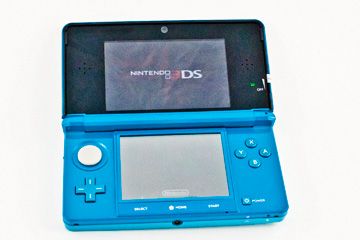
The Nintendo 3DS is a handheld gaming device that incorporates 3-D graphics without requiring special glasses.
Advertisement
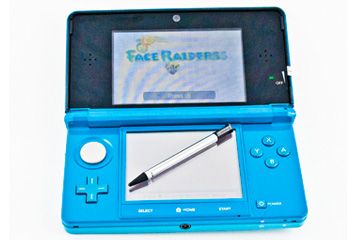
You control games on the Nintendo 3DS through a combination of the gamepad, buttons, circular pad and the stylus. The camera and microphone can also come into play.
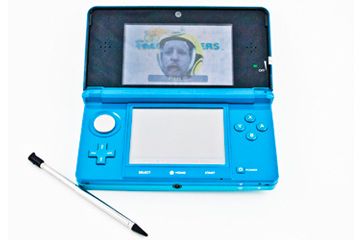
The game Face Raiders lets you take a photo of yourself which you then blast into tiny digital bits.
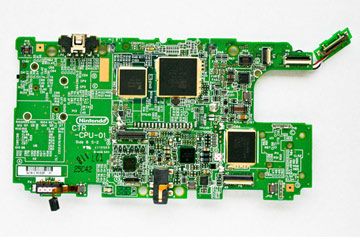
The main circuitboard on the Nintendo 3DS contains chips ranging from sensors to processors.
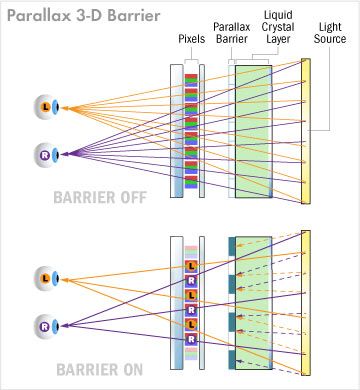
This illustration shows how a parallax barrier -- like the one found in the Nintendo 3DS -- creates the illusion of a three-dimensional object without the need for glasses.
Advertisement
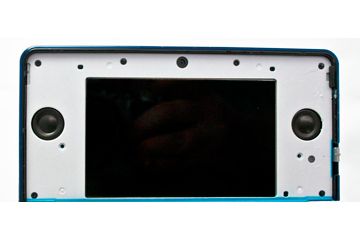
This what the Nintendo 3DS's 3-D screen looks like with the protective covering removed. You can see the speakers mounted on either side of the screen.
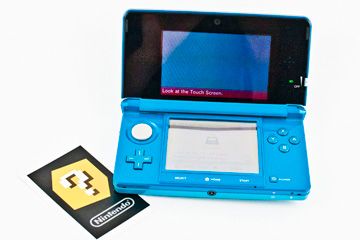
The Nintendo 3DS introduces augmented reality gaming into the Nintendo experience with special cards.
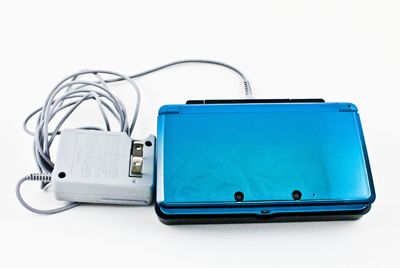
The Nintendo 3DS and power cord.
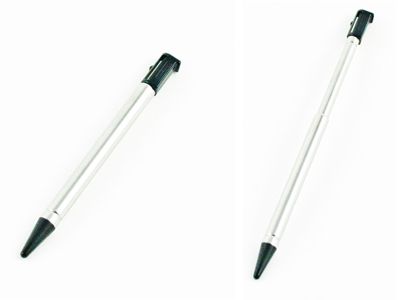
The Nintendo 3DS comes with a telescoping stylus that fits snugly in the back of the device.

The Nintendo 3DS comes with several cards designed for augmented reality games.
Advertisement
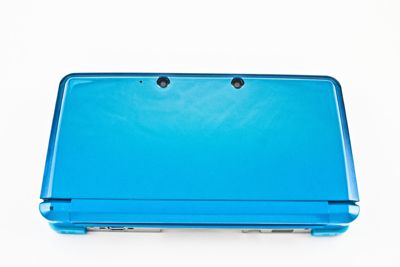
You can see the two cameras on the back of the Nintendo 3DS - they let you take 3-D pictures.

The side view of the Nintendo 3DS - you can see the switches for the Wi-Fi and 3-D features.
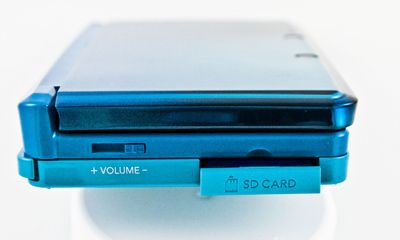
On this side of the Nintendo 3DS you can see the SD card slot and volume control.
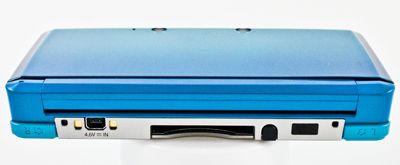
The back of the Nintendo 3DS is where you'll find the power port, cartridge slot and stylus slot.
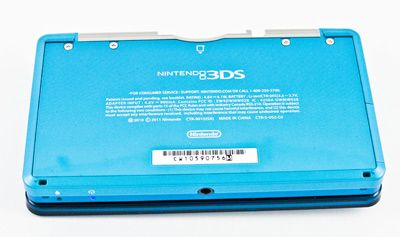
The bottom of the Nintendo 3DS. Nintendo uses standard 00 Phillips-head.
Advertisement
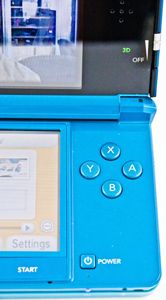
The right side of the Nintendo 3DS has the power button and standard Nintendo game buttons.
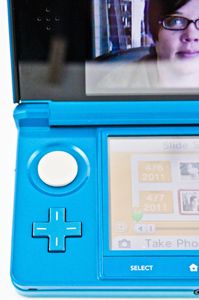
The left side of the Nintendo 3DS has the standard gamepad controller as well as a new circular pad controller.
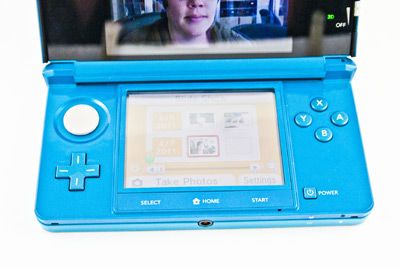
The Nintendo 3DS's touch-screen surface is a resistive touch screen.
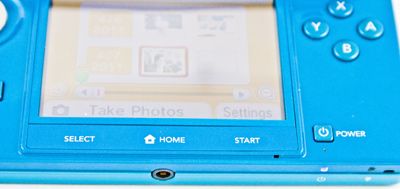
A close up on the base of the Nintendo 3DS shows the placement of the main control buttons.
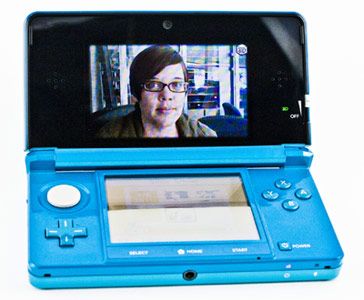
The front-facing camera on the Nintendo 3DS can take images that you can use in applications and games.
Advertisement
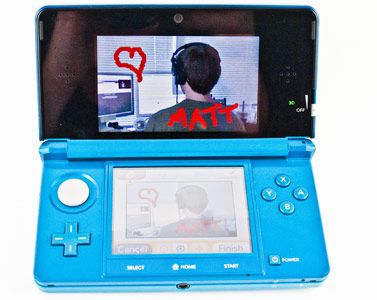
After taking photos, you can use the stylus to add your own personal touch to pictures. We love Matt!
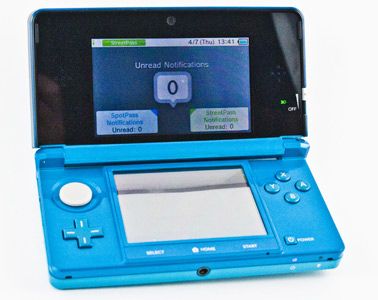
You'll occasionally get updates on the Nintendo 3DS either from Nintendo or by walking by other people playing on their own systems.

The sound recorder on the Nintendo 3DS lets you play with the microphone to create your own sound effects.
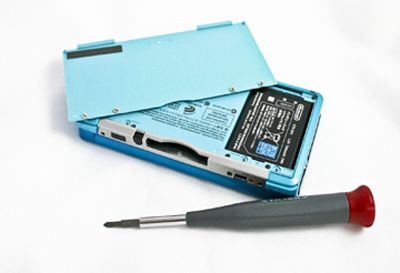
Replacing the battery of the Nintendo 3DS is simple -- you just need a size 00 Phillips-head to remove the back plate.
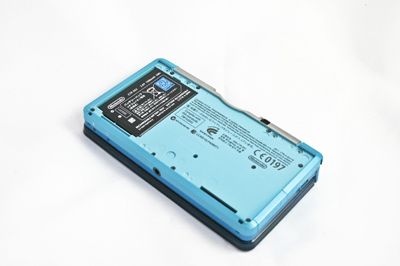
The Nintendo 3DS with the back panel removed.
Advertisement
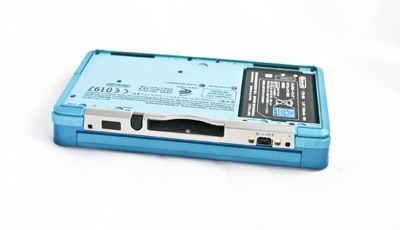
A view of the opened Nintendo 3DS from the back.
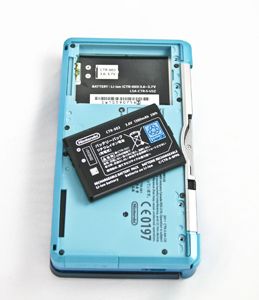
The Nintendo 3DS's battery pops out without much trouble.
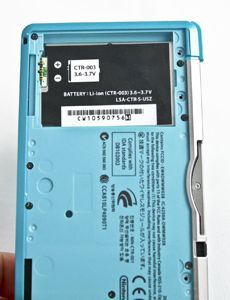
Only a few screws hold the base of the Nintendo 3DS together.
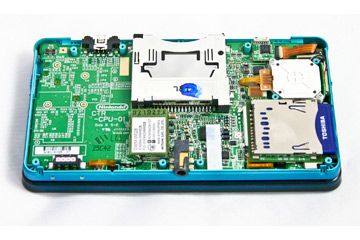
Opening up the Nintendo 3DS voids your warranty. Better let us do it.
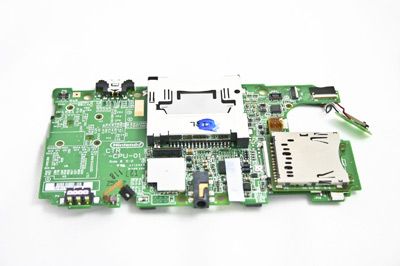
Here's the circuitboard for the Nintendo 3DS.
Advertisement
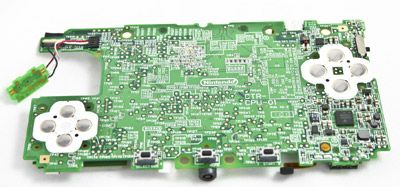
The back side of the Nintendo 3DS circuitboard reveals the contacts for the buttons and gamepad controls.
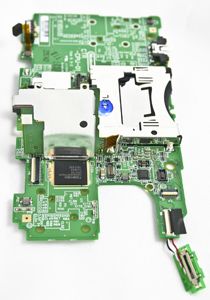
Lifting the SD card slot reveals the Toshiba flash memory chip.

Here's the Nintendo 3DS's resistive touch screen free from its frame.
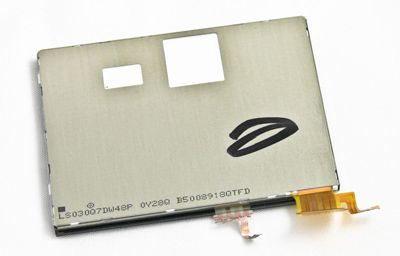
The back of the Nintendo 3DS touch screen isn't terribly exciting.
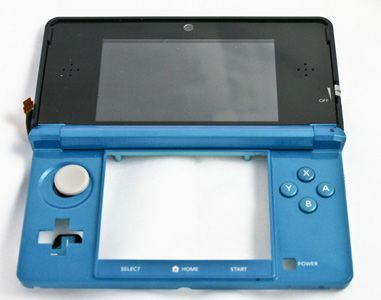
The Nintendo 3DS case free of its guts.
Advertisement
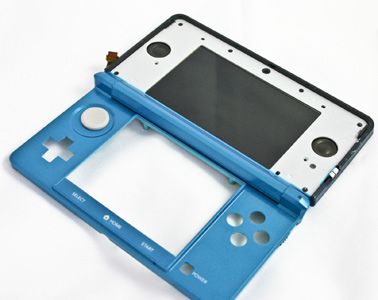
The protective covering has been removed from the 3D screen on the Nintendo 3DS.
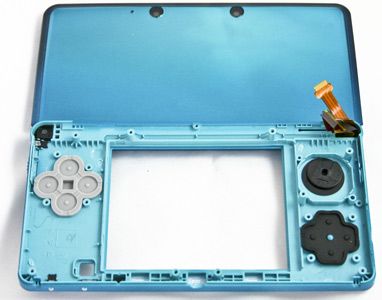
Here you can see the rubber pads that rest against the controls' contacts.
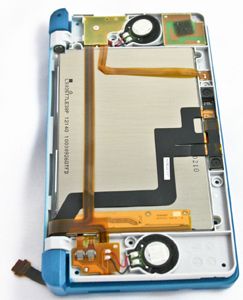
The back of the Nintendo 3DS 3-D screen. You can see the wiring and the back of the speakers.
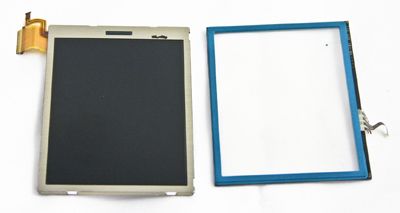
Here's the resistive touch screen for the Nintendo 3DS with its protective cover removed.

The back panel of the 3DS with all extraneous elements removed.
Advertisement
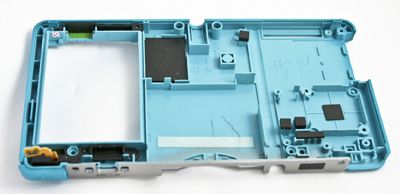
Flip the back panel over and you'll see the frame upon which the electronics are mounted.
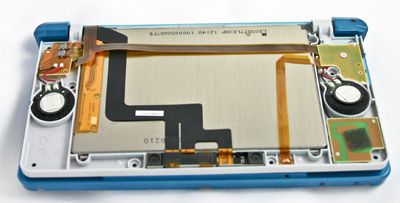
A close look at the wires that provide power to the 3-D screen and sound system for the Nintendo 3DS.
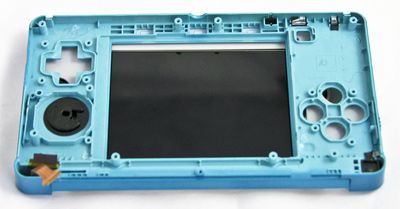
This part of the case serves as the mount for the controls and touch screen display.
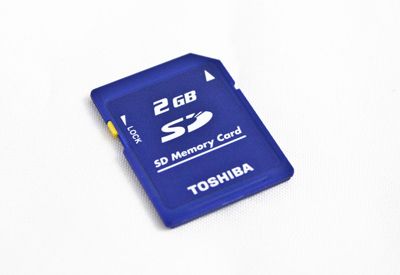
The Nintendo 3DS comes with a 2 gigabyte SD card from Toshiba.
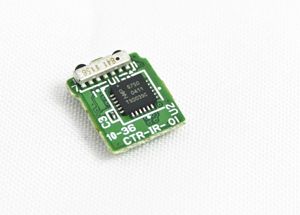
This tiny chip controls the Nintendo 3DS's infrared transceiver.
Advertisement
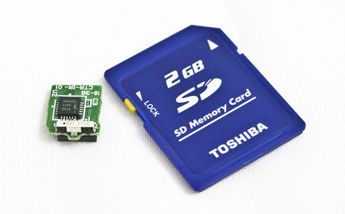
The IR chip for the Nintendo 3DS next to an SD card to give an idea of scale.

This odd-looking component is the interface for the Nintendo 3DS's circle pad controller.
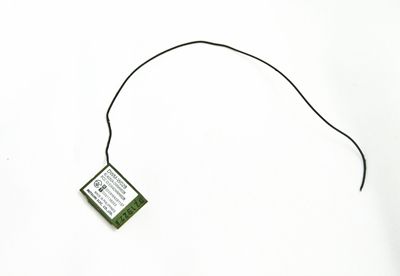
The Wi-Fi board for the Nintendo 3DS. The long wire is the Wi-Fi antenna.
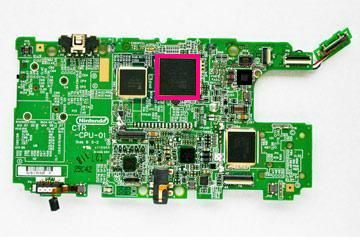
Highlighted is the ARM CPU for the Nintendo 3DS. This chip provides the horsepower.
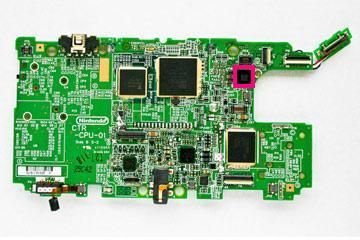
This tiny highlighted chip in the Nintendo 3DS is a gyroscope sensor made by Invensense.
Advertisement

The Fujitsu chip in the Nintendo 3DS provides the random access memory (RAM) for the device.
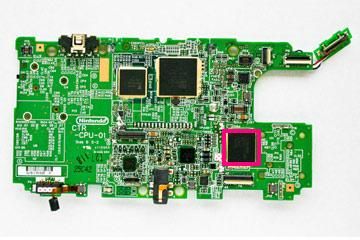
Toshiba's chip gives the Nintendo 3DS its flash memory storage.
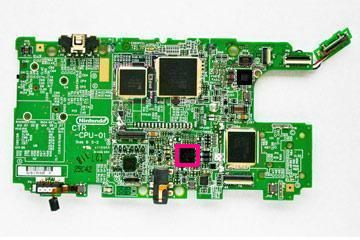
This chip from Texas Instruments is a graphics processing unit (GPU), which takes some of the burden of generating graphics off the CPU.
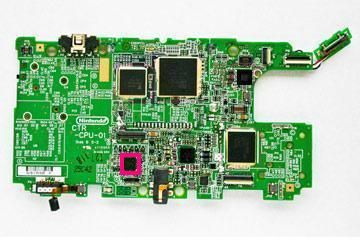
This mysterious chip in the Nintendo 3DS appears to be related to recording data.
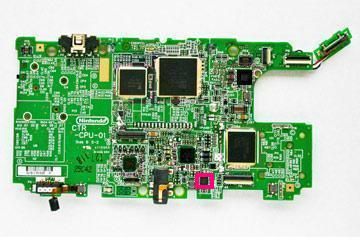
This itty bitty chip is Nintendo 3DS's accelerometer.
Advertisement
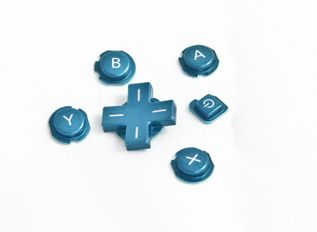
A selection of buttons from the Nintendo 3DS.
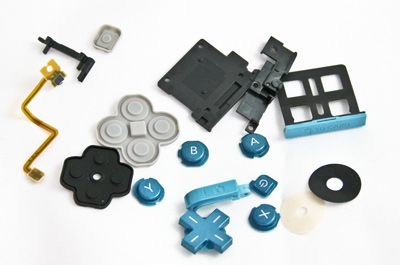
Assorted Nintendo 3DS components.
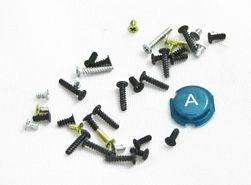
This is how many screws it takes to keep a Nintendo 3DS from falling apart. The button provides a sense of scale.
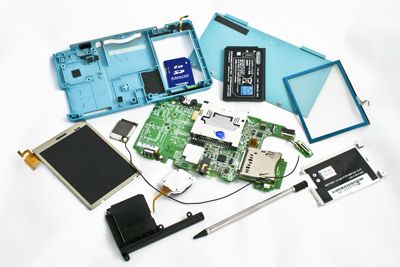
HowStuffWorks.com can sometimes be a little cruel to electronics but it's all in the pursuit of knowledge.
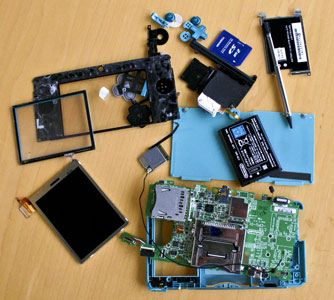
This is what a Nintendo 3DS looks like once we're done with it.
Advertisement